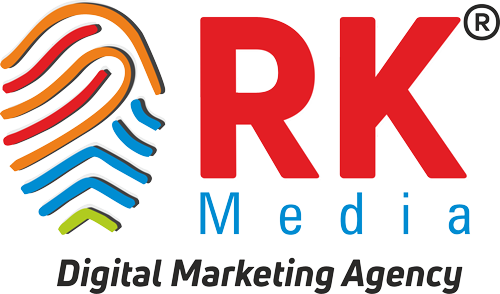Unleashing the Power of Digital Marketing in Revolutionizing Finance
Introduction
Definition of Revolutionizing Finance
The introduction of your paper should start by providing a clear and concise definition of the term “Revolutionizing Finance.” This definition sets the stage for your readers and ensures they understand the core concept of your paper. In this context, “Revolutionizing Finance” might refer to the transformation of traditional financial systems, practices, and services through the integration and utilization of digital marketing strategies and technologies. This can encompass a range of innovations, including but not limited to online banking, digital payment platforms, fintech startups, and more.
Significance of Digital Marketing in Finance
In this section, you should discuss the importance and impact of digital marketing in the finance industry. Digital marketing encompasses a wide array of online strategies such as social media advertising, content marketing, email marketing, SEO, and more. Explain how these strategies have transformed the way financial institutions interact with customers, acquire new clients, and deliver financial products and services. Highlight the role of data analytics, customer segmentation, and personalization in creating a more customer-centric financial sector.
Purpose of the Paper
This part outlines the objectives of your paper. What do you aim to achieve or convey with this research? Some potential purposes could include:
1. Exploring the Evolution: Discuss how finance has evolved through digital marketing techniques.
2. Analyzing Success Stories: Investigate case studies of financial institutions that successfully leveraged digital marketing.
3. Evaluating Challenges: Identify and discuss challenges and obstacles in adopting digital marketing in finance.
4. Providing Recommendations: Offer practical suggestions for financial institutions looking to embrace digital marketing.
5. Predicting Future Trends: Discuss the anticipated trends and developments in the synergy of digital marketing and finance.
Remember to structure your introduction in a way that builds anticipation and sets the context for the rest of your paper. Make it clear to your readers what they can expect from your research and why it’s important in the context of finance and digital marketing.
The Landscape of Traditional Finance
Overview of Conventional Financial Services
The traditional financial services sector is the bedrock of the global economy, providing essential services such as banking, insurance, investment, and wealth management. These services have been predominantly delivered through brick-and-mortar institutions like banks, insurance companies, and stock exchanges. Traditional finance operates on well-established principles, regulations, and intermediaries to facilitate transactions, manage risk, and allocate capital. Key components of conventional financial services include:
1. Banking: Banks have long been the primary institutions for storing and managing money. They offer services like savings accounts, checking accounts, loans, and payment processing.
2. Insurance: Insurance companies provide coverage for various risks, including health, property, and life. These policies are typically sold through agents or brokers.
3. Investment: Traditional finance offers investment opportunities through stock markets, bonds, mutual funds, and other asset classes. Investors typically work with brokers or financial advisors.
4. Wealth Management: Wealth management services cater to high-net-worth individuals and help them manage and grow their assets through a combination of investment strategies and financial planning.
Challenges and Limitations
Traditional finance, while well-established, is not without its challenges and limitations. Some of these include:
1. Lack of Accessibility: Traditional financial services are often inaccessible to underserved populations, especially in remote or economically disadvantaged areas.
2. High Costs: Many traditional financial services come with high fees and commissions, reducing the returns for investors and increasing the costs for borrowers.
3. Limited Transparency: In some cases, financial products and services lack transparency, making it difficult for consumers to fully understand their financial commitments.
4. Slow Processes: Traditional finance processes can be slow, involving paperwork, manual verifications, and lengthy approval procedures.
5. Bureaucracy and Regulations: Stringent regulatory requirements and complex bureaucracy can make it challenging for both financial institutions and consumers.
6. Risk of Middlemen: Intermediaries such as brokers and agents may introduce additional costs and potential conflicts of interest.
The Need for Innovation
The limitations of traditional finance have spurred the need for innovation, which has come in the form of digital marketing and technology-driven financial services. Key factors driving this need for innovation include:
1. Changing Consumer Expectations: Modern consumers are tech-savvy and expect convenient, fast, and personalized financial services. They seek digital solutions that fit their lifestyles.
2. Globalization: As the world becomes more interconnected, there is a growing need for cross-border financial services that can operate efficiently on a global scale.
3. Fintech Disruption: Fintech companies are challenging traditional finance by offering innovative solutions that streamline processes, reduce costs, and increase accessibility.
4. Data and Analytics: Digital marketing and technology enable the collection and analysis of vast amounts of data, which can be used to make more informed financial decisions.
5. Blockchain and Cryptocurrency: Technologies like blockchain have the potential to revolutionize how financial transactions are conducted, making them more secure and efficient.
6. Regulatory Changes: Governments and regulatory bodies are also adapting to the changing landscape and may encourage or require financial institutions to embrace digital innovations.
Unleashing the power of digital marketing in revolutionizing finance involves leveraging technology and data to address the limitations of traditional finance, offering more inclusive, cost-effective, and efficient financial services that meet the evolving needs of consumers in the 21st century. Digital marketing plays a pivotal role in promoting these innovative financial solutions and attracting a customer base that is increasingly digital-savvy.
Digital Marketing in Finance
Digital marketing has become a transformative force in the financial industry, reshaping the way financial institutions interact with customers, promote their services, and gather crucial data. In this section, we will explore the various aspects of digital marketing in finance, including its core components, the role of data analytics, and real-world case studies illustrating successful digital marketing strategies within the financial sector.
Understanding Digital Marketing
Digital marketing refers to the use of digital channels and technology to promote products or services, build brand awareness, and engage with a target audience. In the context of finance, digital marketing encompasses a wide range of activities, including online advertising, social media marketing, email marketing, and content creation, all aimed at reaching and engaging current and potential customers.
The key principles of digital marketing in finance include:
1. Online Presence: Establishing a strong online presence is vital. This involves creating a professional website, optimizing it for search engines, and maintaining an active presence on various social media platforms.
2. Customer-Centric Approach: Understanding your audience and tailoring marketing strategies to their needs is crucial. Personalization and user experience are paramount.
3. Content Creation: Developing informative and relevant content helps educate customers and build trust. Blogs, videos, infographics, and e-books can all be part of a content marketing strategy.
4. Multi-Channel Approach: Using various digital channels, such as search engines, social media, email, and mobile apps, to reach customers where they are most active.
Key Components: SEO, Social Media, Content Marketing, PPC
1. SEO (Search Engine Optimization): SEO is the practice of optimizing your website and online content to rank higher in search engine results pages (SERPs). In finance, SEO is essential to ensure that potential customers can find your services when searching for financial solutions.
2. Social Media Marketing: Social media platforms like Facebook, Twitter, LinkedIn, and Instagram provide an excellent medium for financial institutions to engage with their audience, share valuable content, and build brand loyalty.
3. Content Marketing: Creating and sharing valuable content helps establish authority and trust. Financial institutions can use blogs, whitepapers, and webinars to educate customers about financial topics.
4. PPC (Pay-Per-Click) Advertising: PPC advertising allows financial institutions to bid for ad placement in search engine results. It’s an effective way to drive traffic to your website and target specific keywords or demographics.
The Role of Data Analytics
Data analytics plays a critical role in digital marketing in finance. It involves collecting and analyzing data from various digital marketing efforts to gain insights and improve strategies. This process includes:
1. Customer Insights: Analyzing customer behavior, preferences, and demographics to create more targeted marketing campaigns.
2. ROI Measurement: Tracking the return on investment for different marketing channels and adjusting budgets and strategies accordingly.
3. A/B Testing: Conducting experiments to compare different marketing approaches and determine which one is more effective.
Case Studies: Successful Digital Marketing in Finance
Examining real-world case studies provides valuable insights into how digital marketing can revolutionize finance. Here are a few examples of financial institutions that have effectively harnessed the power of digital marketing:
1. American Express – Social Media Engagement: American Express has leveraged social media platforms like Twitter and Instagram to engage with their customers effectively. They use these channels not only for customer support but also to provide financial tips, advice, and exclusive offers. This approach humanizes the brand and fosters a sense of community among cardholders.
2. Mint.com – Content Marketing: Mint.com, a personal finance management platform, has built its reputation on content marketing. They regularly publish blog posts and infographics on various financial topics, offering valuable advice to their users. This not only keeps users engaged but also positions Mint.com as a trusted source of financial information.
3. Chase Bank – PPC Advertising: Chase Bank effectively utilizes PPC advertising to reach potential customers searching for financial products. By bidding on relevant keywords, they ensure their ads appear at the top of search results, driving traffic to their website and increasing the chances of conversions.
4. Fidelity Investments – Data Analytics: Fidelity Investments uses data analytics extensively to provide personalized investment recommendations to its customers. By analyzing customers’ investment history and preferences, Fidelity tailors its services, making the investment experience more individualized and user-friendly.
These case studies demonstrate that digital marketing strategies can significantly impact the financial industry. They highlight the importance of tailoring strategies to the specific needs of the financial sector and the power of data-driven decision-making to enhance customer experiences and boost engagement.
Benefits and Opportunities
In the rapidly evolving landscape of finance, digital marketing has emerged as a powerful tool for transforming the industry. This section explores the key benefits and opportunities that come with the integration of digital marketing strategies in the financial sector.
Enhanced Customer Engagement:
One of the primary advantages of leveraging digital marketing in finance is the ability to enhance customer engagement. Traditional financial institutions often struggle to connect with customers on a personal level. With digital marketing, financial brands can foster a more interactive and personalized relationship with their clients. Here’s how:
1. Content Creation and Distribution: By creating informative and engaging content, financial institutions can educate their customers about various financial products and services. This not only helps clients make informed decisions but also strengthens their loyalty to the brand.
2. Social Media Engagement: Social media platforms provide a unique opportunity to engage with customers in real-time. Financial companies can use these platforms to answer questions, provide updates, and even run interactive campaigns, fostering a sense of community and trust.
3. Email Marketing: Email is a powerful tool for reaching out to customers with personalized offers, updates, and educational content. By segmenting their email lists and sending relevant messages, financial institutions can tailor their communication to individual customer needs.
Personalization and Targeting
Digital marketing empowers financial institutions to offer highly personalized and targeted experiences to their customers. This not only improves customer satisfaction but also increases the chances of cross-selling and up-selling. Key aspects of personalization and targeting include:
1. Data Analytics: By collecting and analyzing customer data, financial institutions can gain insights into individual preferences and behavior. These insights enable the creation of tailored marketing campaigns and product recommendations.
2. Segmentation: Financial companies can segment their customer base based on various criteria such as age, income, and financial goals. This allows for the creation of marketing messages that resonate with specific customer segments.
3. Retargeting: Through tools like retargeting ads, financial institutions can remind potential customers about their services and products, ensuring that their brand remains top-of-mind.
Cost-Efficiency
Digital marketing is known for its cost-efficiency compared to traditional marketing methods. Financial institutions can allocate their budgets more effectively and see a higher return on investment (ROI) through digital channels. Key aspects of cost-efficiency in digital marketing include:
1. Digital Advertising: Pay-per-click (PPC) advertising and other online advertising methods allow financial institutions to control costs and target their audience more precisely.
2. Automation: Marketing automation tools can streamline repetitive tasks, saving time and reducing labor costs. For instance, email automation can send personalized messages to large customer lists with minimal manual effort.
3. Measurable Results: Digital marketing campaigns can be tracked and analyzed in real-time. This means financial companies can quickly identify which strategies are working and adjust or reallocate resources accordingly.
Building Trust and Credibility
In the financial industry, trust and credibility are paramount. Digital marketing plays a significant role in building and maintaining these qualities. Here’s how:
1. Educational Content: By providing valuable, educational content on their websites and social media, financial institutions can establish themselves as trusted sources of information.
2. Transparency: Digital marketing can be used to communicate a commitment to transparency and ethical practices. Regularly updated blogs, social responsibility initiatives, and clear communication of terms and conditions can build trust.
3. Customer Testimonials and Reviews: Encouraging satisfied customers to leave reviews and testimonials online can help build credibility. Potential customers often rely on the experiences of others when choosing financial services.
In conclusion, digital marketing is revolutionizing the finance industry by offering enhanced customer engagement, personalization and targeting, cost-efficiency, and the means to build trust and credibility. Financial institutions that embrace these benefits and opportunities are better positioned to thrive in the modern financial landscape, where digital communication and customer-centric approaches are key to success.
Conclusion
In this dynamic landscape, RK Media Digital Marketing Agency plays a pivotal role, offering tailored solutions that enhance brand visibility, customer acquisition, and market outreach for financial organizations. Their expertise in harnessing digital channels, including social media, content marketing, and email campaigns, has led to remarkable success stories, where increased brand awareness and trust have translated into higher revenue streams and customer retention rates.
As we look to the future, the fusion of finance and digital marketing promises exciting possibilities, with personalized fintech experiences, data analytics-driven strategies, and seamless digital transactions becoming the norm. The revolution in finance is ongoing, and RK Media Digital Marketing Agency continues to be at the forefront, enabling financial institutions to adapt, thrive, and stay competitive in this digital age. In a world where information and connectivity are king, it’s clear that the power of digital marketing will remain a driving force in reshaping the financial industry for years to come.
Image Reference: Freepik
Disclaimer: All trademarks, logos, and brand names are the property of their respective owners. All company, product, and service names used in this website are for identification purposes only. Use of these names, trademarks, and brands does not imply endorsement.



















